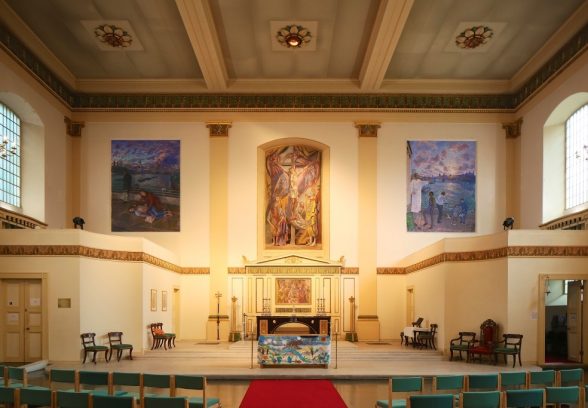This website uses cookies
This website uses cookies to enable it to function properly and to analyse how the website is used. Please click 'Close' to accept and continue using the website.



Whilst most owners of listed buildings have to apply to their local planning authority for listed building consent if they wish to make changes, church buildings in active use for worship generally benefit from “ecclesiastical exemption”, which means that the church authorities themselves are allowed to decide which changes can and can’t go ahead. Whether or not this provides the same level of protection that secular buildings have is much debated. We were so concerned about proposed alterations to St John’s Waterloo, London, that just before Christmas we took matters as far as a Consistory Court Hearing, the equivalent of a full planning inquiry for a Church of England church. St John’s was originally built in 1829, but is of great interest to C20 Society as, after being bombed in the Second World War, it was partially re-constructed and entirely refitted by Thomas Ford as the Festival of Britain church in 1951. During the South Bank exhibition it was used not just for services but for concerts and events too, and it has a wonderful Feibusch mural.
If you are nearby and have never stepped inside, I strongly recommend that you do. The specific things that we opposed include the removal of two chapels, the pulpit and lectern, and altar rails, and the creation of new side galleries with angled walls, and storage underneath. We felt that none of these were necessary to the successful future use of the building for worship or events, and that the church’s admirable plans for more community services could be implemented without jeopardising the Thomas Ford work. An unusually long four day hearing was held in the church itself, and I was extremely proud of the rigour and clarity of our representations and the performance of the C20 team under cross examination. We await the result, but meanwhile a huge thank you to our pro bono barrister Jeremy Pike, to trustee Alan Powers and our Conservation Adviser Clare Price, and to Doug Black conservation officer for the London Borough of Lambeth and Nigel Barker, who came along in his own time to put the Historic England case. We are optimistic about the outcome, but whether we are successful or not, we need to show that we are prepared to stand our ground in this way if our objections anywhere are going to be taken seriously.
Catherine Croft, Director

Become a C20 member today and help save our modern design heritage.